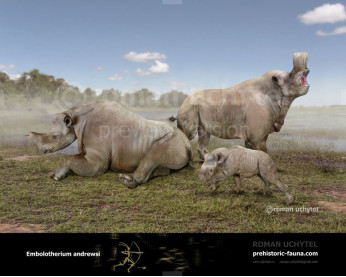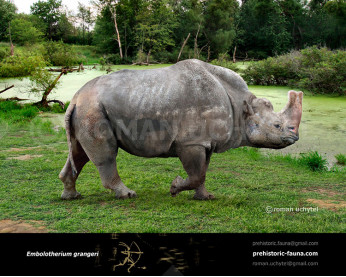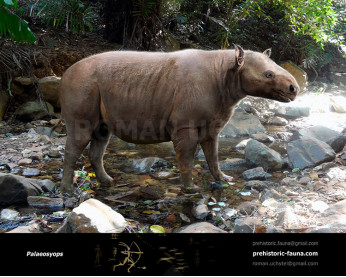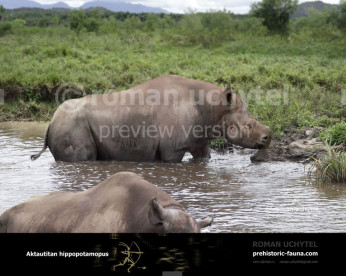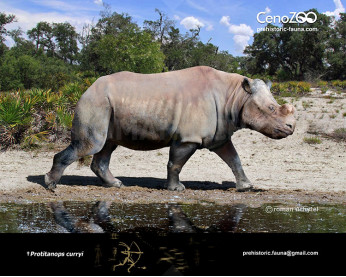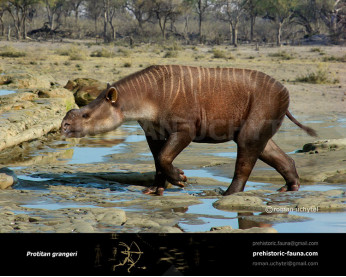Megacerops
7979Megacerops (Megacerops (inc. Brontotherium) Leidy, 1870)
Order: Perissodactyla
Family: †Brontotheriidae
Temporal range: during the Late Eocene (North America)
Dimensions: length - 5 m, height - 250 сm, weight - 2800 kg
A typical representative: Megacerops coloradensis Leidy, 1870
Megacerops is an extinct genus of the prehistoric odd-toed ungulate family Brontotheriidae, an extinct group of rhinoceros-like browsers related to horses. Brontotheriidae is a family mammals that lived in Paleogene (from lower Eocene until lower Oligocene) in North America, Asia and Europe. They stood about 2.5 metres tall at the shoulders and fed on relatively soft vegetation (leaves; probably, fruit). Brontotheriidae’s skulls were quite massive; however their brains were small. Their heads with protruding eyes were "crowned” by horns shaped by swollen nose bones; on the outside, these horns were covered in skin. Wide and long horns of some species branched out at their base, while in other species they formed a Y-shaped protuberance.Probably, the habitat of Brontotheriidae was damp and warm, such as lakes surrounded by reeds and water bushes. Scientists consider climate change and consequent change in vegetation the main reason for the extinction of these rhinoceros-like ‘thunder horses”. Another possible reason for their brief existence was the small size of their brains and imperfect teeth.
Megacerops (Megacerops (inc. Brontotherium) Leidy, 1870)
Order: Perissodactyla
Family: †Brontotheriidae
Temporal range: during the Late Eocene (North America)
Dimensions: length - 5 m, height - 250 сm, weight - 2800 kg
A typical representative: Megacerops coloradensis Leidy, 1870
Megacerops is an extinct genus of the prehistoric odd-toed ungulate family Brontotheriidae, an extinct group of rhinoceros-like browsers related to horses. Brontotheriidae is a family mammals that lived in Paleogene (from lower Eocene until lower Oligocene) in North America, Asia and Europe. They stood about 2.5 metres tall at the shoulders and fed on relatively soft vegetation (leaves; probably, fruit). Brontotheriidae’s skulls were quite massive; however their brains were small. Their heads with protruding eyes were "crowned” by horns shaped by swollen nose bones; on the outside, these horns were covered in skin. Wide and long horns of some species branched out at their base, while in other species they formed a Y-shaped protuberance.Probably, the habitat of Brontotheriidae was damp and warm, such as lakes surrounded by reeds and water bushes. Scientists consider climate change and consequent change in vegetation the main reason for the extinction of these rhinoceros-like ‘thunder horses”. Another possible reason for their brief existence was the small size of their brains and imperfect teeth.

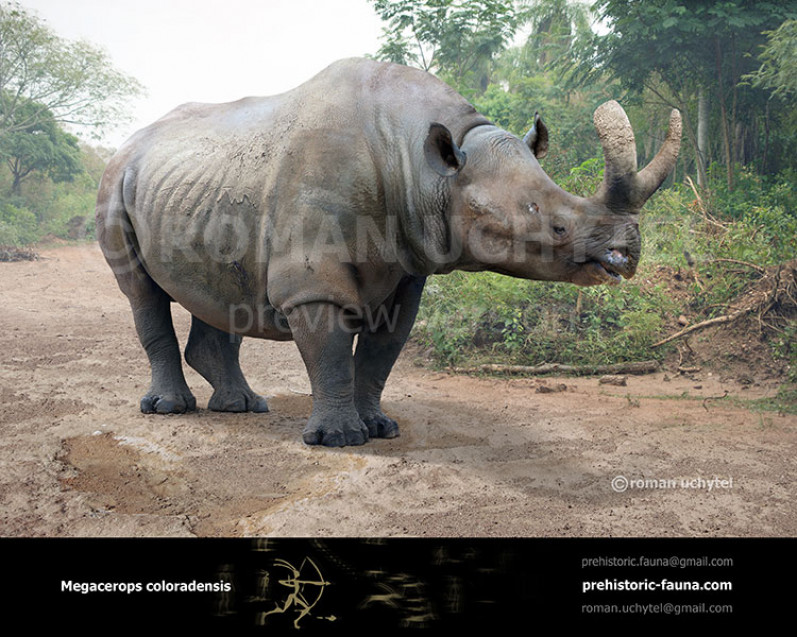
1-797x638.jpg)
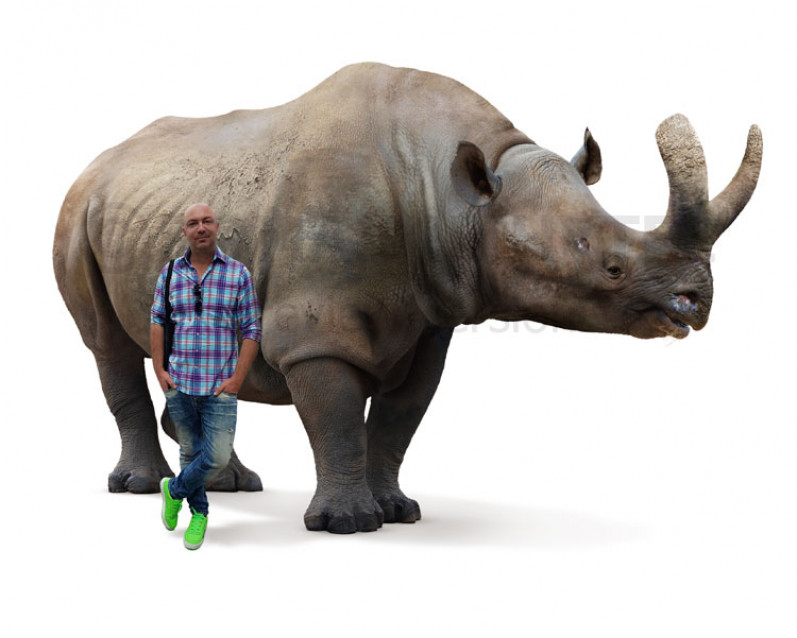

1-70x56.jpg)

